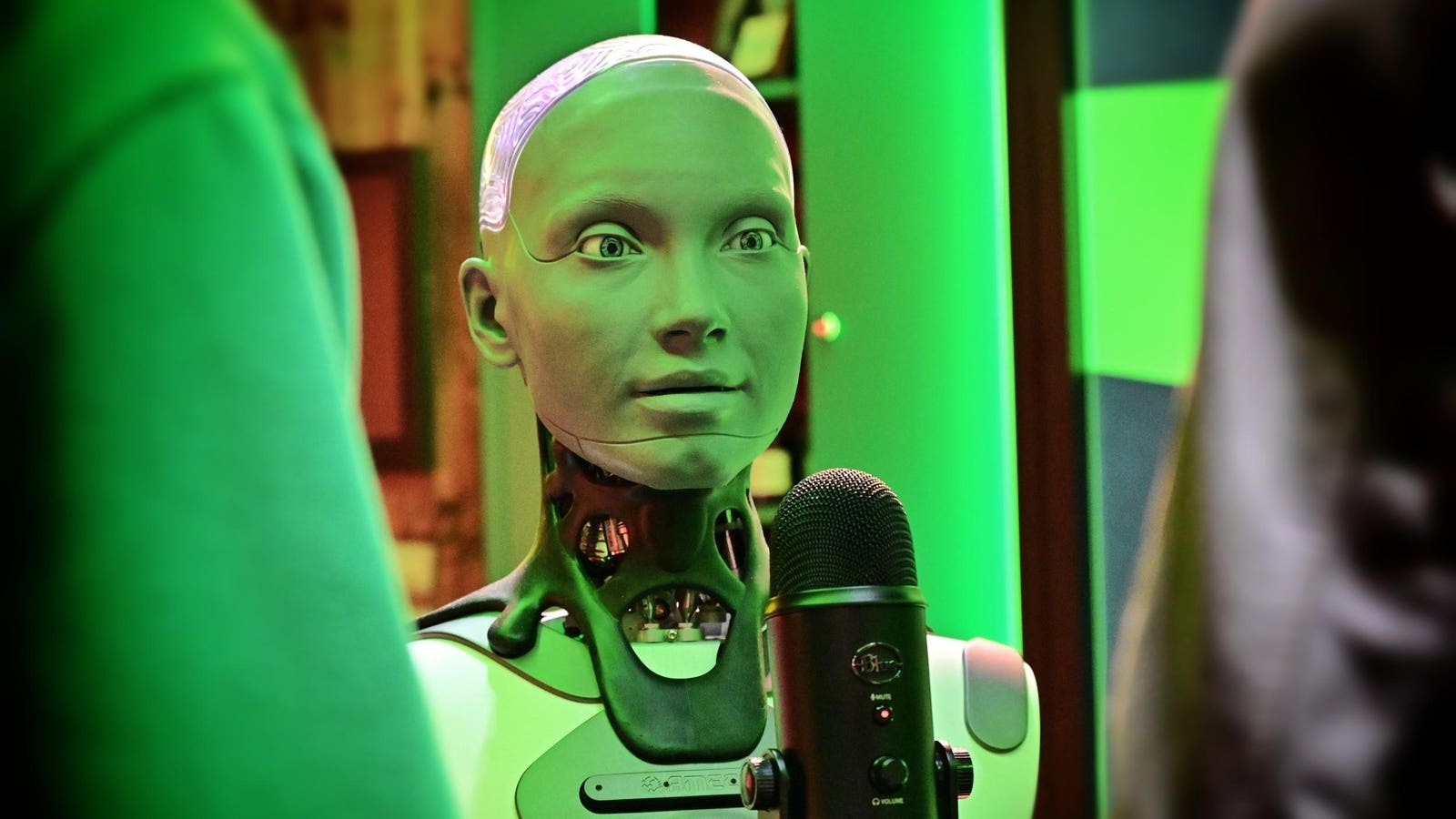Future Lab at the Goodwood Festival of Speed 2025 showcased the most jaw-dropping innovations in AI, … More
If you come to the Goodwood Festival of Speed expecting nothing but the roar of supercars and the scent of high-octane fuel, you’re only getting half the story. Tucked just beyond the Hillclimb track lies one of the most futuristic corners of the estate, where combustion engines give way to quantum simulations, satellites, and synthetic intelligence. Welcome to Future Lab, Goodwood’s immersive technology campus, where sci-fi steps off the page and into reality.
Curated by the ever-curious and brilliantly insightful Lucy Johnston, Future Lab is where Goodwood asks not what the car of the future looks like, but what kind of future we want to build in the first place. And based on this year’s line-up, that future is intelligent, immersive, and quite possibly orbiting the planet.
Technology For A Better World
Future Lab showcased four themes this year, tackling some of the biggest questions of our time: how we move through the world (Mobility for Humanity), how we build things (New Industrial Revolutions), how we map reality (Exploring Spatial Intelligence), and how we care for the planet (Our Big Blue Dot).
Each theme was packed with hands-on demonstrations and mind-expanding exhibits, but a few projects in particular rose above the crowd, not just for what they showed, but for what they promise.
Meet Ameca: The Robot With A Face That Gets You
Let’s start with the humanoid robot that drew both fascination and a few startled double-takes: Ameca. Created by UK-based Engineered Arts and presented at Future Lab by The National Robotarium, Ameca looks less like a robot and more like a character from the next Pixar movie.
What sets Ameca apart is not just her hyper-realistic facial expressions or uncanny ability to hold eye contact. It’s her flexibility. She doesn’t come with a baked-in intelligence, but instead acts as a hardware interface for any AI brain you like, whether it’s ChatGPT, Alexa, or something custom-built. As Steve Maclaren from The National Robotarium put it, “She’s designed to communicate on a human level with facial expression, actual eye contact, and gestures.”
And while some visitors looked nervous at first, Maclaren observed that children immediately connected with Ameca, chatting away like it was the most normal thing in the world. In ten years, he predicts robots like Ameca could be helping with household chores or assisting in healthcare. Judging by the reception here, that future might arrive sooner than we think.
Manufacturing Materials—In Orbit
While humanoid robots might get the headlines, one of the most quietly revolutionary projects at Future Lab was floating a little higher, literally. Enter Space Forge, a Cardiff-based aerospace company developing reusable satellites to manufacture semiconductors in orbit.
Why space? Because the vacuum and microgravity conditions found in low Earth orbit are ideal for growing ultra-pure crystals used in semiconductors and quantum materials. On Earth, gravity introduces tiny imperfections. Up there, materials form more perfectly, meaning better chips, better devices, and lower energy usage.
Andrew Griffiths of Space Forge explained how their ForgeStar platform is already in orbit and collecting data. Future versions will be fully return-capable, equipped with high-tech reentry shields and soft-landing systems that allow the satellites to be recovered, refurbished, and reused.
This isn’t just a moonshot. With funding from the UK government, NATO, and ESA, Space Forge is positioning itself as the factory of the future, floating above us.
The Endurance Wreck, Revived By AI
From space to seabed, the Future Lab experience also plunged into the history of Ernest Shackleton’s legendary ship, the Endurance.
The Falklands Maritime Heritage Trust (FMHT) showcased the extraordinary mission to locate the wreck of the Endurance beneath 3,000 meters of Antarctic ice using undersea robots and sonar drones. Once found, the next challenge was to bring it to life, and that’s where artificial intelligence came in.
Elena Lewendon from FMHT detailed how the team used photogrammetry and AI-powered colour correction to stitch together over 25,000 deep-sea images. The result is an extraordinarily accurate digital twin of the wreck. From that, a 3D-printed model was created, built over 350 hours, to help children and visitors explore every bolt and timber of Shackleton’s ship.
“Children can now experience the Endurance in a way no history book ever could,” Lewendon said. And with its new status as a protected Antarctic monument, the wreck is now both a preserved artifact and a living educational tool.
Mapping The Universe With AI
Looking up rather than down, the University of Sussex and the European Space Agency brought the cosmos into focus with the Euclid space telescope. While it quietly orbits 1.5 million kilometres from Earth, Euclid is busy mapping the universe in unprecedented detail. The mission? To decode the mysterious forces of dark matter and dark energy.
Professor Stephen Wilkins explained how Euclid’s mission relies on AI to process its staggering volume of data, billions of galaxies, many faint and distant. “There’s just no way humans could classify all of it manually,” he said. “So we’re teaching machines to spot the extraordinary in the ordinary.”
Wilkins hopes this new lens on the universe will bring answers to some of physics’s most stubborn questions. At the very least, it’s likely to inspire a new generation of stargazers, armed with better data and smarter tools than ever before.
A Few More Marvels Worth Mentioning
The wonder didn’t stop there. Visitors could pilot the moon’s surface in VR thanks to Somniacs and Cesium’s Lunar Flight Experience, or step inside Atlantic Studios’ cosmic Apple Vision Pro journey through the James Webb Space Telescope’s finest images. BMW offered a glimpse of its ‘Heart of Joy’ control system for next-gen electric driving. Marble’s climate drones mapped environmental change with surgical precision. And the E1 electric raceboats added a splash of speed to the sustainability message.
Each exhibitor, from ocean explorers to orbital engineers, shared a common message: the future isn’t just about sleek machines or clever code. It’s about purpose.
Why Future Lab Matters More Than Ever
Among the engine growls and cheering crowds, Future Lab is a welcome jolt of reflection. It reminds us that technology isn’t just for going faster, it’s for going further, with thought and with care.
As Lucy Johnston, the Lab’s curator, summed up: “This is about championing technology for a better world. The exhibitors are solving real-world challenges with bold thinking, creative tools, and scientific collaboration.”
Future Lab proves that the real race is to make tomorrow better than today. And judging by what was on show this year, we’ve got some very good people (and robots) on our team.









